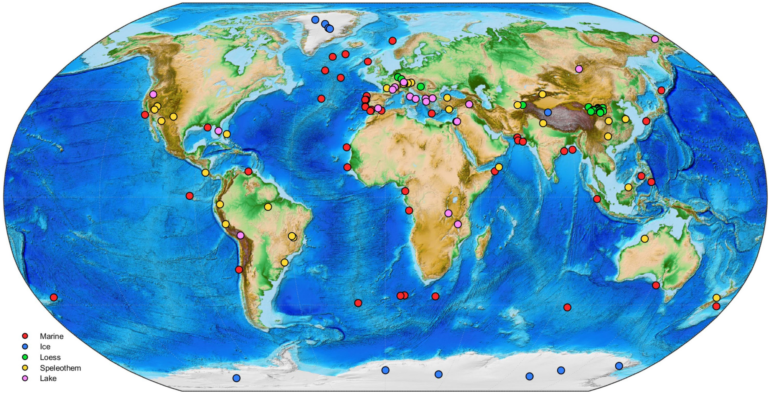Earth’s climate has undergone abrupt transitions in the past, which are often linked to the crossing of tipping points. Understanding how and why this has happened is urgent because anthropogenic emissions of greenhouse gasses could potentially trigger similar tipping points in this century, causing irreversible changes in the climate and the environment.
The PaleoJump database is designed to help achieve this understanding. The archive gives users access to high-quality data on past climates that are especially useful for studying tipping points. The construction of the database is led by Witold Bagniewski at the École Normale Supérieure, Paris, France, as part of the TiPES Project. It is published in Scientific Reports.
Paleo data sets, which consist of various proxy indicators that provide indirect evidence of past climate conditions, play an important role in climate science. In addition to allowing scientists to reconstruct Earth’s climatic history, information on how past climates evolved is routinely used to evaluate the performance of the climate models we rely on to assess future climate change.
Not all data sets are equal in quality and relevance, however. The source of paleo data, as well as their time resolution and time span, can vary significantly. This means that finding relevant high-quality records to compare with climate models or reconstruct past climates is a difficult and time-consuming process.
The PaleoJump database is designed to resolve these difficulties by including pre-evaluated, relevant high-quality data archives for the study of climate tipping points in the past. These records are being analyzed with recently published automated methods for abrupt climate transitions. Thus, PaleoJump can provide climate scientists with a clearer picture of where and when abrupt transitions happened throughout Earth’s history.
A clearer picture
The paleo data featured in PaleoJump originates from ice cores, marine and terrestrial (lake and loess) sediments, and cave deposits.
The paper describes how the database, combined with advanced analytical tools that automatically detect abrupt transitions, facilitates the analysis of past abrupt climate transitions, including the identification of potential tipping points.
“It’s interesting to have a more accurate understanding of the chronology of the events on a regional and global scale. It gives us a clearer picture of what kind of climate change happened in the past, and this can help us better understand where future tipping points might occur,” says Witold Bagniewski, first author of the paper.
More information:
Witold Bagniewski, Denis-Didier Rousseau and Michael Ghil, The PaleoJump database for abrupt transitions in past climates, Scientific Reports (2023). DOI: 10.1038/s41598-023-30592-1. www.nature.com/articles/s41598-023-30592-1
Provided by
University of Copenhagen
Citation:
PaleoJump: High-quality data for the study of climate tipping points (2023, March 24)



